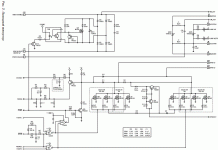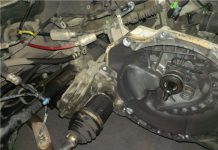In detail: do-it-yourself stabilizer repair from a real master for the site my.housecope.com.
Like any other electronic equipment, voltage stabilizers are susceptible to damage. Some models have a long service life, others break more often. Much depends not only on the quality of the installation, but also on the thoughtfulness of the circuitry.
The most susceptible to breakdowns are units that contain mechanical devices: a brush assembly in electromechanical stabilizers and electromagnetic relays in relay ones. Failures of thyristor devices are much less common and are mostly associated with abnormal voltage values and low-quality components.
It is impossible to foresee all variants of breakdowns within the scope of one article, and only highly qualified specialists are capable of repairing complex electronic equipment. However, some damage can be repaired at home.
Further, we will talk about the repair of the Resant stabilizer, as the most common brand. Other types of devices are either clones or have similar circuitry and internal structure.
Any repair to stabilizers should begin with a visual inspection of the interior of the device. First of all, you should pay attention to the absence of visible damage: burning of the tracks on the board, the terminals of the elements, the integrity of the transformer windings. Often breakdowns in the stabilizer occur due to improper operation of the control circuit, which is caused by the loss of capacity of electrolytic capacitors. Such elements usually have a bulged end of the body and must be replaced first. Let them not be the cause of the breakdown at the moment, but next time they will make themselves felt. The capacity of the replaceable capacitors should be the same as on the original, and the operating voltage may exceed the required - there is nothing wrong with that, even better.
| Video (click to play). |
Important! When replacing capacitors, do not reverse polarity.
Further search options depend on the type of stabilizer used.
A significant part of the damage to electromechanical devices is associated with critical wear of the servo brushes. The movement of the brushes along the bare part of the windings occurs with significant friction, as a result of the passage of high currents through the brush-winding contact, the elements of the brush assembly are heated. All this leads to the destruction of the brush material. If during inspection it is revealed that the brush is damaged, its wear prevents it from tightly pressing against the winding, then the brushes must be replaced.
Another case of breakdown is the burning of the winding wire and the closure of adjacent turns with electrically conductive dust from the brushes. To restore performance, you need to clean the bare part of the winding from oxides with fine-grained emery paper.
Important! Do not use coarse grain pelt, as the grooves on the surface of the wires will cause strong sparking and burning of the windings and brushes. The main criterion for choosing a grain size is the absence of visible grooves on the surface of the wire.
Dust between the windings can be removed with a strong blast of air from the compressor. Not everyone has such a device, so you can use an old hard-bristled toothbrush. The work will be easier if the brush is moistened with alcohol of the maximum concentration.
Note! Diluted alcohol, solvents, and especially water should not be used.
In relay stabilizers, electromagnetic relays have the least reliability. The flow of large currents through the contacts causes their burning or even sintering.The latter is dangerous in that it can cause a short circuit of part of the autotransformer windings.
Resant voltage stabilizers or similar ones have five relays on the board, which switch parts of the autotransformer windings according to a certain algorithm. The predominant fluctuations in the input voltage of about one value lead to the fact that only part of the relay, one or two, are constantly in operation. Therefore, it is they who, first of all, fail.
The search for a faulty element is made difficult by the fact that small-sized relays are low - and medium-power stabilizers have an opaque non-separable case. Sometimes it is possible to identify a faulty relay by lightly tapping the body of each relay with an insulated screwdriver handle. Under mechanical stress, the resistance between the burnt contacts can be restored, and the sintered contacts can open. Found relays must be changed without fail.
Powerful devices can have a relay in a transparent case, through which the operation of the contact groups is visually observed. In addition, the body is collapsible for cleaning. Burnt contacts can be tidied up with fine-grained emery cloth. The grain size should be even smaller than when cleaning the windings of electromechanical stabilizers.
Relay in transparent housing
In the event that a visual inspection did not reveal any damage, the relay can be removed from the board and the contacts can be ringed using an ohmmeter. The location and numbering of contacts are shown on one side of the relay housing. The device should show infinitely high resistance between normally open contacts, and close to zero between closed contacts. Having applied a constant voltage of 12 V to the control winding, they ring the contacts again. Now those that were open should close and vice versa.
Important! The relays have powerful leads and require the use of a suitable soldering iron for soldering. Do not overheat the printed conductors.
If there is a LATR - laboratory autotransformer, then troubleshooting and repair of the Resant or other device can be greatly simplified. To do this, assemble the simplest chain:
- The LATR input is connected to the power supply;
- LATR output - to the input of the stabilizer;
- An AC voltmeter is connected to the output of the stabilizer.
Rotating the LATRA adjustment knob from minimum to maximum values, observe the operation of the stabilizer and the voltmeter readings. In a mechanical stabilizer, when the input voltage changes, the servo shaft with the brush assembly should rotate, and the output voltage should correspond to the rated voltage.
In relay stabilizers, you can hear the switching on of various relays, and the output voltage will change stepwise with a swing of no more than 10V when the input voltage changes from the minimum to the maximum.
This repair of the voltage stabilizer is more complicated and requires knowledge of the operation of electronic circuits. In relay and thyristor stabilizers, key transistors that control the operation of triacs or relays are subject to verification. The transistors are checked according to the usual method after they have been soldered from the board. The resistance between collector and emitter must be infinite for any polarity of measurement.
Resistance base - collector and base - emitter in one polarity should also be infinitely large, and in the other - be insignificant.
In electromechanical stabilizers, you can observe the lack of rotation of the servo shaft when the input voltage changes. The reason for this is a malfunction of the HA17324a operational amplifier. This IC has a low cost and is widely available on the market.
Repair of the voltage stabilizer in some cases is possible with your own hands with a minimum of time. It should be borne in mind that the safety of family members may depend on the correctness of the repair.If you are not completely confident in your abilities, then it is better to entrust this matter to a professional.
Resanta voltage stabilizers can be found in many apartments in our country, which is understandable. This is due to the fact that such units make it possible to normalize the operation of all electrical appliances that are present at home. In other words, they allow you to save quite expensive equipment in the event of an overload in the network, or in case of voltage surges, thereby significantly extending the operational life of all electrical equipment.
However, the operation of the voltage stabilizer also carries the risk of certain breakdowns, the only way out of which is timely repair.
There may be several reasons for this - from improper operation to natural causes of breakdown, i.e. long service life.
To avoid this, you must exactly follow the instructions that come with the kit, which allows you to significantly extend the service life of the unit in the correct mode of operation. If, nevertheless, a breakdown did happen, then you need to know what methods you need to properly carry out repairs with your own hands, so as not to further aggravate the situation. In this article, we will look at the main malfunctions, as well as ways to eliminate them in a timely manner.
This video shows the Resant's stabilizer with a malfunction









